Rubin’s exquisite murals surface here regularly in NYC on the streets of Brooklyn and the Bronx. Each one is a cause for celebration. We recently had the opportunity to speak with the talented artist.
When and where did you start getting up?
I started tagging in 1985 – age 10. I was living in Gothenburg, Sweden. I grew up there among the concrete projects. Their walls were my first canvas.
What inspired you?
I watched the movie Beat Street at my friend’s house. That started everything. The movie had a huge impact on me, as did growing up in the projects.
How did your family feel about what you were doing back then?
My mother worried a lot. But she was supportive.
Do you have a formal art education?
No. I never wanted to go to art school. I studied music and played in several bands in my native Gothenburg.
Back in Sweden, did you work alone or with a crew?
I painted with NTA (Night Time Artists) back in Sweden. But I also painted alone.
What about here – in NYC?
I’ve collaborated mostly with 4Burner members: Sen2, Dasic, Owns, Deem, Gusto and Logek.
Would you rather paint alone or with others?
I like painting alone, but painting with others is important for artistic growth.
Is there anyone in particular with whom you would like to collaborate?
I would love to collaborate with Futura. That would be something.
Have you any preferred spots and/or surfaces?
I love the concrete walls up in Hunts Point in the South Bronx.
What is the riskiest thing you ever did?
I climbed five or six stories on a drain pipe to get to the top of a building.
Why?
Because it was an impossible spot that no-one had reached before.
Your artwork seems to blur the lines between graffiti and street art. How do you feel about the graffiti/street art divide?
We should be on the same side, but we’re not. There is definitely a beef between street art and graffiti. I have always tried to bring these two opposites together in my art. It’s very challenging. There is so much ego in graffiti and street art trends seem to come and go.
How do you feel about the movement of street art and graffiti into galleries?
It’s exciting and interesting. I see it as a natural progression.
Have you exhibited in galleries?
Mostly in Sweden, but I exhibited along with Cope2 two years ago in Nolita.
What is your main source of income these days?
My main source of income is photography. I’m also involved with the production of a Swedish/Finnish arts and culture magazine.
How do you feel about the role of the Internet in all this? And do you follow any sites?
I think it’s great. I follow 12ozProphet and StreetArtNYC.
What inspires you these days?
Craftsmanship, Kraftwerk’s minimal electronic music and the contrasts between my two homes: Bushwick, Brooklyn and the gorgeous woods of Lapland, where I spend the summers with my wife.
Are you generally satisfied with your finished pieces?
Never.
When you look back to what you did two years ago, how do you feel about it?
Two years ago feels like an eternity, especially when living in NYC. I tend to look forward instead of looking back.
How has your artwork evolved through the years?
In the nineties, I was one of the most active writers in Sweden. In the mid-nineties my graffiti took a turn to the geometric. From 1999 to 2008, I took a break and focused on my band, Kingston Air Force. I can’t really describe my usual style. Someone once called it abstract geometry; that’s a pretty good description, but my style is still evolving.
Of all the cities in which you painted, which is your favorite?
New York City. I love the energy and the mix of people. Nothing beats New York.
Who are some of your favorite artists?
The Swedish artist Gouge. He’s amazing! Bates from Denmark, Dondi and Riff 170 from NYC, C215 and Nelio from France, Boaone from Germany and Sofles and Fecks from Australia.
What advice would you offer young writers and younger artists?
Work hard. Learn the craftsmanship. Perfect your technique. Practice. Be a good role model to younger writers. Be nice.
What do you see as the role of the artist in society?
Every artist is an egoist, and I’m no exception to the rule. I interpret what I see and how I feel through my art. I create for myself, but I’m very humbled every time someone appreciates my pieces. It means that they appreciate my take on what’s going on around us. That’s very flattering.
Where do you see yourself in five years?
I don’t even know where I’ll be next week. NYC has taught me how to live right here and now, and I’m really enjoying taking a day at a time.
Interview by Lois Stavsky with Lenny Collado and Tara Murray; photos by Lenny Collado, Dani Mozeson. Tara Murray and Lois Stavsky
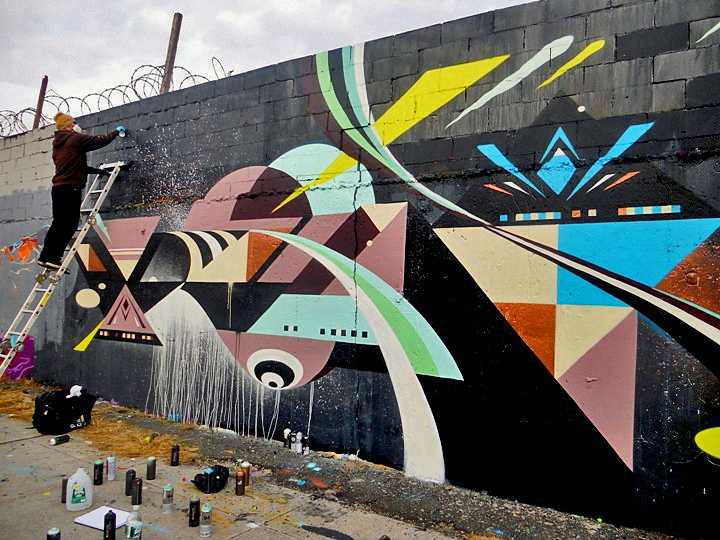
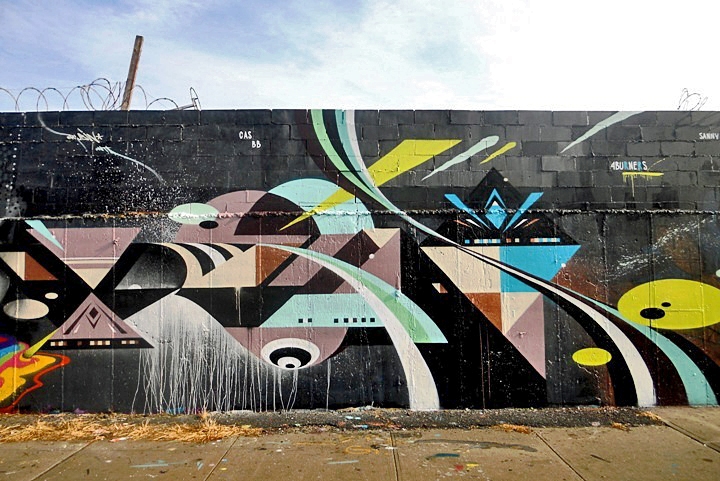
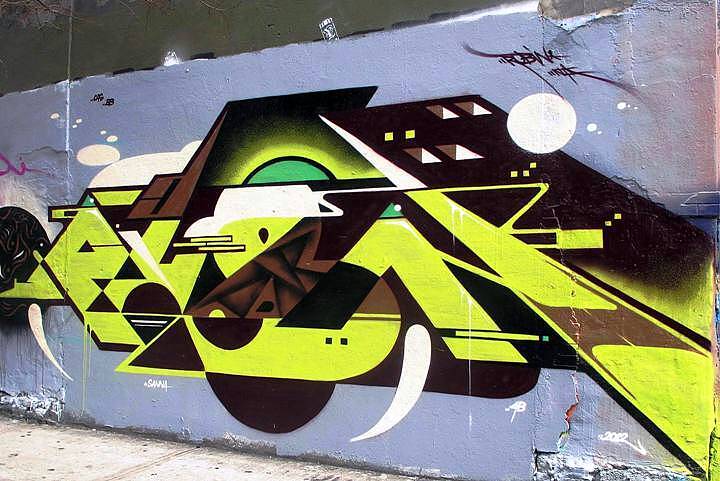
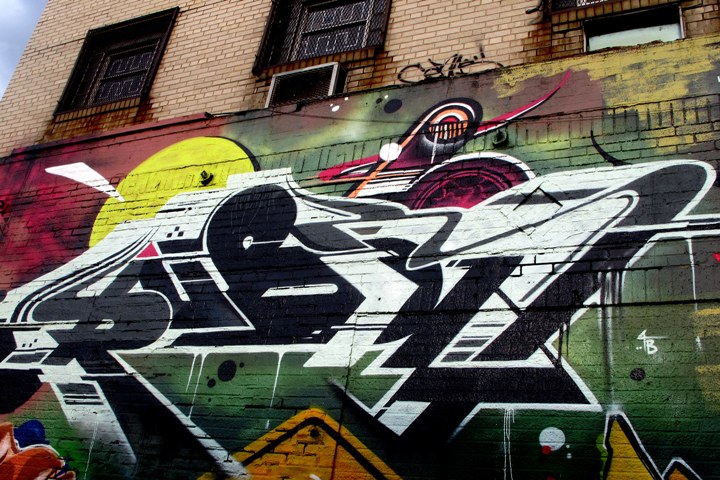
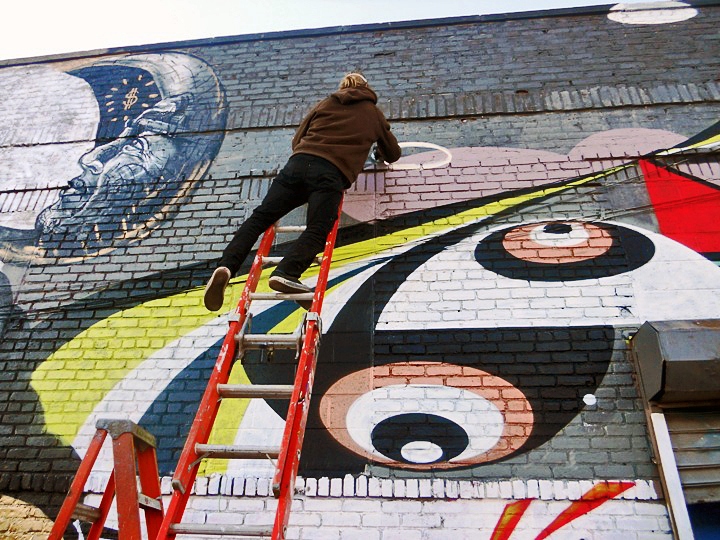
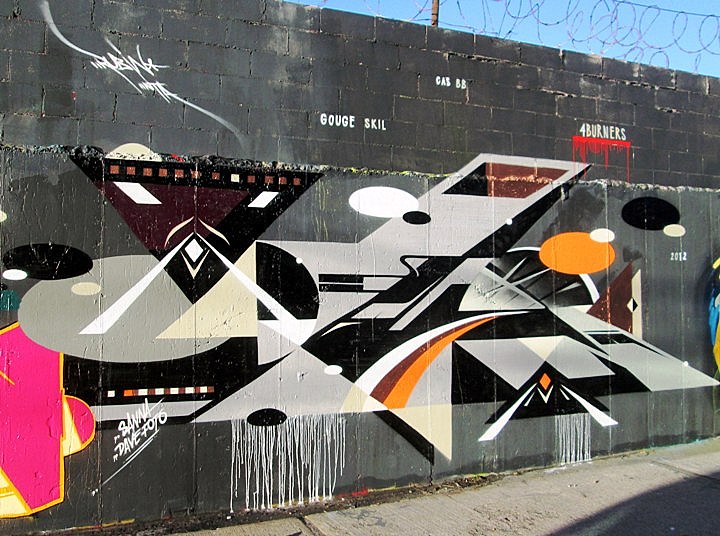
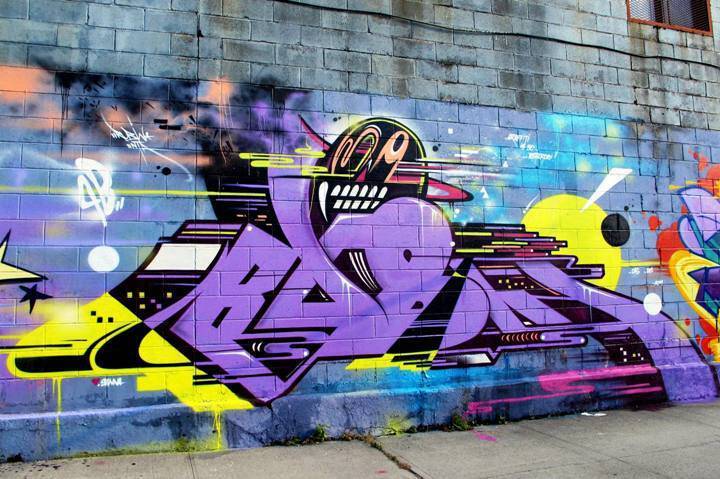

Warning: count(): Parameter must be an array or an object that implements Countable in /srv/users/serverpilot/apps/streetartnyc/public/wp-content/themes/thesis_189/lib/classes/comments.php on line 43
{ 0 comments… add one now }
{ 2 trackbacks }